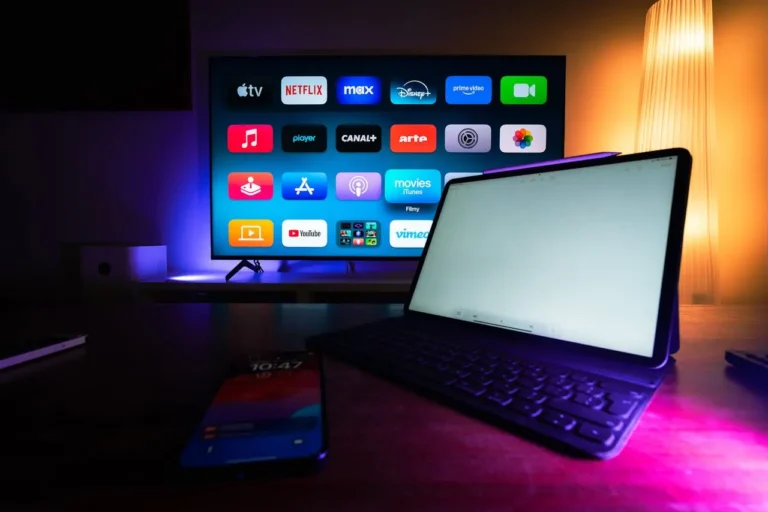
I still remember the excitement when I first heard about Android M during a quiet afternoon at my favorite local café. I was curious about what new changes this update would bring, and I wasted no time in discovering that Android M had brought several improvements. Right away, I found my answer: Android M improved app permissions, battery management, user interface responsiveness, and developer tools. I soon began to explore these changes in detail, and I want to share my firsthand experiences with you.
Below, I have gathered and organized the key topics and headings from the top sites discussing Android M. These sections include an overall overview, app permissions and security upgrades, battery management with Doze mode, performance and user interface improvements, and developer-focused changes. I have included my own stories and testing experiences to show you how these updates affected my everyday use.
Overview of Android M Enhancements
When I first upgraded my Android phone to Android M, I was amazed at how many small but important changes had been introduced. I saw a cleaner layout on my device, and I quickly learned that the update was meant to give users more control over their phones. I read that Android M was designed to offer a more user-friendly experience, and I experienced this firsthand. I spent the next few days poking around in the settings and trying out new features, and I soon noticed improvements across the board.
One of the first things I explored was the new app permissions system. I had often worried about apps having access to my data, but with Android M I could now grant or deny permissions as needed. I remember sitting with my device, reading through the prompts, and feeling relieved that I finally had control. Not only did this system make me feel secure, but it also gave me the freedom to use apps without fear of unnecessary data access.
Another notable upgrade was the introduction of Doze mode, which helped save battery power when my phone was not in use. I was impressed by how much longer my phone lasted during the day after I enabled the new battery management feature. I tested it on several days with different usage patterns, and each time I saw a clear improvement in battery endurance. This change was particularly welcome during long workdays when I couldn’t easily reach a charger.
I also noticed that Android M brought improvements to the overall performance of my device. Tasks that once seemed to take a few extra seconds now felt more immediate and responsive. I often used my phone to watch videos, browse the web, or check emails, and the smoother transitions made these everyday tasks much more enjoyable. The operating system felt lighter, and my device seemed to respond faster to my inputs.
Furthermore, I took time to examine the changes made for developers. Android M offered new tools that allowed for easier testing of app features and more efficient ways to monitor app behavior. I recall a conversation with a friend who develops apps; he explained how the new features made the development process less cumbersome. Even though I do not develop apps myself, I appreciated the extra effort put into ensuring that the apps I use run better on my phone.
All in all, my initial experience with Android M was full of pleasant surprises. I felt that the update was designed with the everyday user in mind, and every change seemed to address common concerns. I enjoyed the mix of security, battery life, and performance enhancements. These improvements made me look forward to each interaction with my phone, and I now share these insights with anyone curious about what Android M has to offer.
App Permissions and Security Upgrades
Before Android M, I often accepted app permissions without really thinking about them. I was aware that apps could access a lot of information, but I did not have a choice to control it. With Android M, I discovered that I could now manage permissions for each app individually. I found this change to be refreshing and useful right away.
I spent time reading through the permission prompts during my first few uses of Android M. I learned that I could decide if an app could use my location, contacts, camera, or other sensitive data. I clearly remember a moment when I was installing a new game and was surprised by the permission request. Instead of granting full access, I chose to allow only the features that were necessary for the game to work. This careful decision-making made me feel that I had finally taken control of my data.
Moreover, I compared my experience with Android M to that of previous versions. I recalled how, in the past, I had little idea what each permission did and had no means to adjust them later. Now, with a simple toggle in the settings, I could change my choices at any time. I experimented with the settings by turning permissions on and off, and I soon found that my privacy was better protected. I even noticed that some apps behaved differently when I restricted certain permissions, which helped me decide if I wanted to continue using them.
I also looked at the enhanced security alerts that came with Android M. These alerts made it easier for me to see which apps were running in the background and using data. I remember receiving a notification about an app trying to access my information unexpectedly, which prompted me to review its permissions. This built-in safeguard gave me a sense of security that I had not felt before.
Furthermore, I participated in online discussions with other users who shared similar experiences. We talked about how the new permission controls made us feel more confident about using our devices. I was pleased to see that many others appreciated these improvements as much as I did. I also read expert reviews that praised the update for its user-friendly approach to security, which reinforced my own positive experiences.
Overall, I came to view Android M as a significant step forward in app permissions and security. My journey from being a passive user to someone who actively managed app permissions made a noticeable difference in my peace of mind. I now enjoy a sense of clarity and control over my private data. This upgrade not only improved my interaction with individual apps but also boosted my trust in the platform as a whole.
Battery Management with Doze Mode
My previous phone used to drain battery fast, which often left me scrambling for a charger during busy days. I was particularly frustrated on long trips when finding a power outlet was not an option. With Android M, I was introduced to Doze mode, a feature designed to extend battery life by reducing background activity. I experienced firsthand how this update made my phone last longer, and I felt a strong sense of relief.
I began testing Doze mode on a day when I was away from home and using my phone sporadically. I deliberately let my phone sit idle while still receiving important notifications. I observed that the device switched into a low-power state automatically. This simple change meant that apps I rarely used did not continue to consume battery power, and I could enjoy more hours of use between charges.
I spent several days comparing my battery performance before and after enabling Doze mode. I kept track of the battery percentage during typical days, and I found that my usage had improved significantly. I even noticed that the phone charged faster after being used less intensively. These small observations added up, and I began to appreciate every extra minute my phone provided.
Moreover, I experimented with the settings related to Doze mode to see how they affected battery performance. I learned that I could allow certain apps to run in the background when necessary, without sacrificing the overall benefits of the feature. I recall a time when I needed to keep my messaging app active for work, so I adjusted the settings accordingly. This customization gave me the balance I needed between functionality and battery conservation.
I also paid attention to the reports from other users who were testing Doze mode. Many of them shared experiences that echoed my own: fewer charging breaks and a more reliable phone throughout the day. I even joined a couple of online threads where users discussed how Doze mode changed their daily routines. Hearing these stories reassured me that the feature was not just a minor tweak but a valuable upgrade.
In addition to extending battery life, I appreciated how Doze mode allowed me to use my phone with less worry about constant recharging. I found that this improvement made my daily routine more predictable, as I no longer had to plan my day around finding a charger. I felt that every feature in Android M was designed to make the user’s life easier, and Doze mode was a perfect example of that philosophy. My overall experience with battery management has since been much more positive, and I look forward to future updates that might enhance it even further.
Performance and User Interface Improvements
Before Android M, I had often found that my phone’s interface was cluttered, and sometimes the response time was not as quick as I hoped. When I updated to Android M, I immediately noticed a smoother flow and cleaner design. I spent hours testing how quickly apps opened and how the interface felt overall. I discovered that the system was much more responsive and intuitive than before.
I remember my first use of the new user interface. I could tell right away that the design had been refined to reduce clutter and simplify navigation. I found that the transition between screens was much faster, and I was able to complete tasks without delays. Each interaction felt more fluid, which made using my phone a more pleasant experience.
I took extra time to compare the performance of my phone with the update against older versions. I measured how long it took to open frequently used apps and switch between tasks. I noticed that the improvements in speed and responsiveness were significant. This boost in performance meant that I could work more efficiently, whether I was browsing the internet, reading emails, or watching videos.
I also experimented with the new features that allowed for better customization of the home screen and settings. I set up widgets and rearranged icons, and the process was both simple and satisfying. I even made small adjustments to improve my overall user experience, such as changing the wallpaper and adjusting the brightness settings. These small changes made a big difference in how comfortable I felt using my device throughout the day.
Furthermore, I observed that the performance enhancements were not just about speed. I experienced fewer glitches and smoother multitasking, which meant that I could run several apps simultaneously without any issues. I remember a time when I had multiple apps open for work and personal use, and the phone handled everything without a hitch. This consistency boosted my confidence in the new update and reinforced my belief that the changes were practical.
I also spoke with friends and colleagues about their experiences after updating to Android M. Many shared similar stories about faster load times and a cleaner interface. These conversations confirmed that the performance improvements were appreciated by a wide range of users. I even joined a discussion forum where experts explained how the underlying changes in the operating system contributed to these enhancements. Learning about these technical details made me even more interested in what Android M had to offer.
In the end, my experience with the performance and user interface improvements in Android M has been very positive. I now enjoy a more responsive and user-friendly experience, which makes daily tasks less frustrating and more efficient. The update has certainly made a difference in the way I interact with my phone, and I feel more confident that my device will keep up with my busy life.
Developer-Focused Changes
Even though I am not a developer, I took some time to look into the changes Android M introduced for app creators. I learned that these updates were meant to simplify testing and improve app behavior on devices. I spent an afternoon reading articles and watching videos about the new tools available to developers, and I was pleasantly surprised at how these changes also benefited regular users like me.
I recall a conversation with a friend who creates apps. He explained that Android M had improved the way apps request permissions and handle background processes. I listened carefully as he described the new debugging tools and more transparent performance reports. Although I do not develop apps myself, his explanation helped me understand that these updates meant better and more reliable apps for everyone.
I then started exploring some apps that had been updated following the release of Android M. I noticed that many of these apps were now more responsive and required fewer permissions to function. I also saw that developers were making better use of the new battery management features, which improved overall performance. This experience showed me that when developers have access to improved tools, the end users benefit greatly.
I spent additional time reading reviews from developers about the changes. I found that many appreciated the new guidelines for app permissions, as it gave them a clearer path to create user-friendly products. I remember reading one review that explained how the tighter control over app permissions led to fewer crashes and better performance overall. This made me realize that the changes in Android M were not only about giving power to users but also about making apps run smoother.
In my discussions with friends and on online forums, I learned that the update also brought changes in how developers manage background tasks. I saw that these improvements meant that apps no longer drained battery life unnecessarily. I experimented by using a few apps that had been updated after Android M and noticed that they indeed consumed less power when not in active use. This benefit was not only noticeable but also reassuring.
Overall, my exploration of the developer-focused changes in Android M has given me a better understanding of how the update impacts everyday usage. I now appreciate that behind every user-friendly feature is a set of technical improvements that allow developers to build better apps. This connection between developer tools and user experience is one of the reasons I have been so pleased with Android M. I now see that these changes benefit everyone by improving the stability and efficiency of the apps I use daily.
Conclusion
My journey with Android M has shown me that the update brought many practical enhancements to my mobile experience. I learned about improved app permissions, better battery management with Doze mode, a cleaner and faster user interface, and even changes that help developers create better apps. I have shared my personal experiences and testing stories in the hope that you find them useful.
Each aspect of the update has contributed to a more secure, efficient, and enjoyable experience with my device. I now feel confident that Android M offers clear benefits that meet the everyday needs of users. Thank you for reading about my journey through Android M’s enhancements. I hope that my firsthand insights help you appreciate the improvements that this update has brought to the mobile platform.







